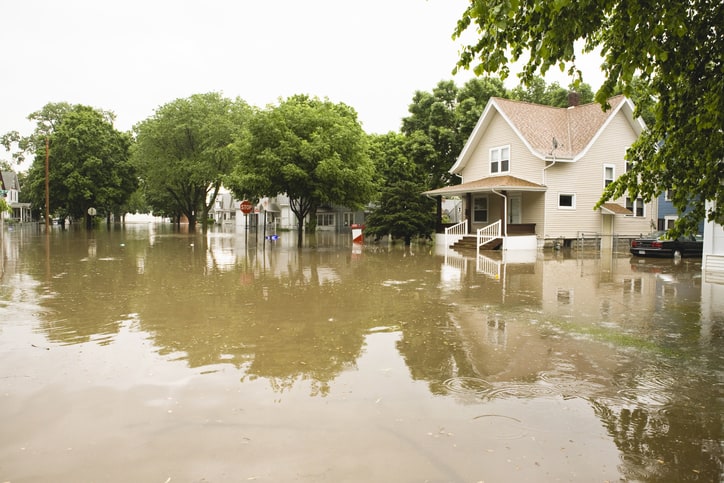
Many homeowners mistakenly believe that floods won’t happen to them, and if it does, that a standard homeowner’s insurance policy will protect them from the cost of flood damage. Unfortunately, this isn’t true. Floods can occur anywhere, at any time. Regardless of whether your client is living in a low-risk or high-risk flood zone, they should be given some basic info about homeowners’ flood insurance. Here are a few key questions about flood insurance you can guide them through.
How do you purchase flood insurance?
There are a number of conditions involved in the purchasing of flood insurance. First, the National Flood Insurance Program (NFIP), managed by FEMA, only offers flood insurance to homeowners in communities that participate in the program. It’s important to note that if your client belongs to one of these communities, flood insurance can be purchased through a private insurance company, not through FEMA directly. Your client can find a participating insurance company at the FEMA website.
How much does flood insurance cost?
The cost of flood insurance is determined by a number of risk factors, including the year of building construction, number of floors, level of flood risk and the amount of coverage required by lender. This amount should also be based on the cost to rebuild, which can be obtained from your client’s insurance company. To find out how much flood insurance will cost for their specific residence, your client can complete the flood risk profile on the FEMA website and contact one of the participating insurance agents listed.
Free Guide: Get useful career info and insights. Download your free copy of the North Carolina Real Estate Income Guide.
How are premiums calculated?
There are a number of factors to consider when determining a flood insurance premium, including the amount and type of coverage being purchased, location and flood zone, and the design and age of your client’s property. For homes in high-risk areas built after the first Flood Insurance Rate Maps were drawn for that community, the elevation of the building in relation to the base flood elevation is also required.
For more information, your client can visit FloodSmart.gov.
What are the limitations on coverage?
FEMA allows only basic items to be covered to get your client back into their home. That means a lot of important and expensive things are not covered by flood insurance. Your client will have to purchase additional personal property coverage if they are worried about the cost of replacing items such as:
- Clothing, furniture, and electronic equipment
- Curtains
- Portable and window air conditioners
- Portable microwave ovens and portable dishwashers, clothes washer and dryer
- Carpets not included in-building coverage
- Food freezers and the food stored in them
- Certain valuable items, such as original artwork and furs (up to $2,500)
Informing your North Carolina real estate clients about flood insurance is just one thing you can do to protect your clients and go the extra mile for them so that you’ll become their go-to broker.






